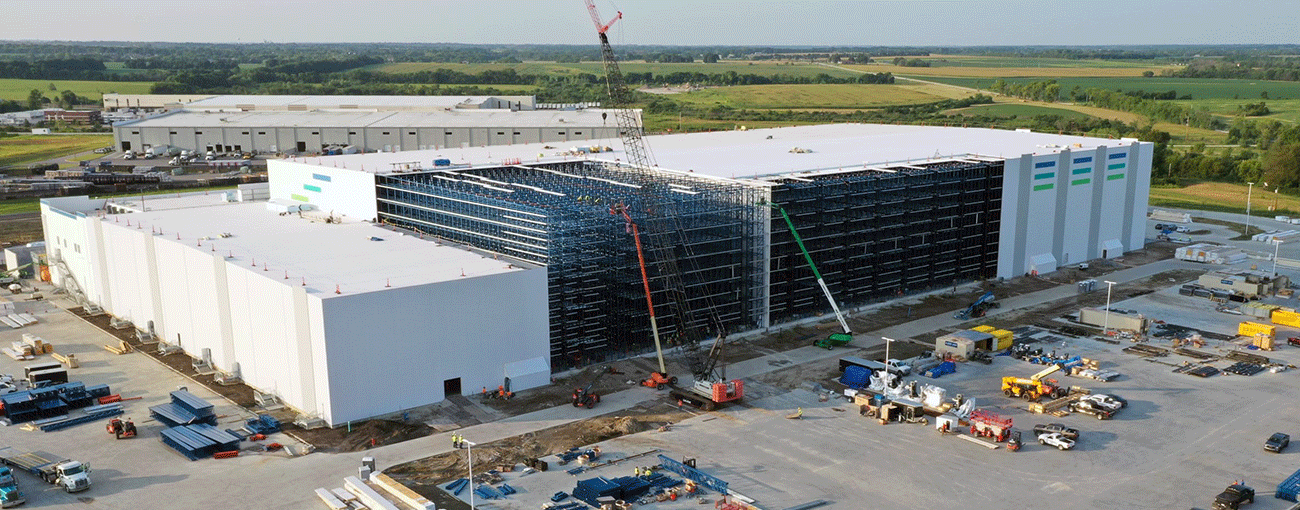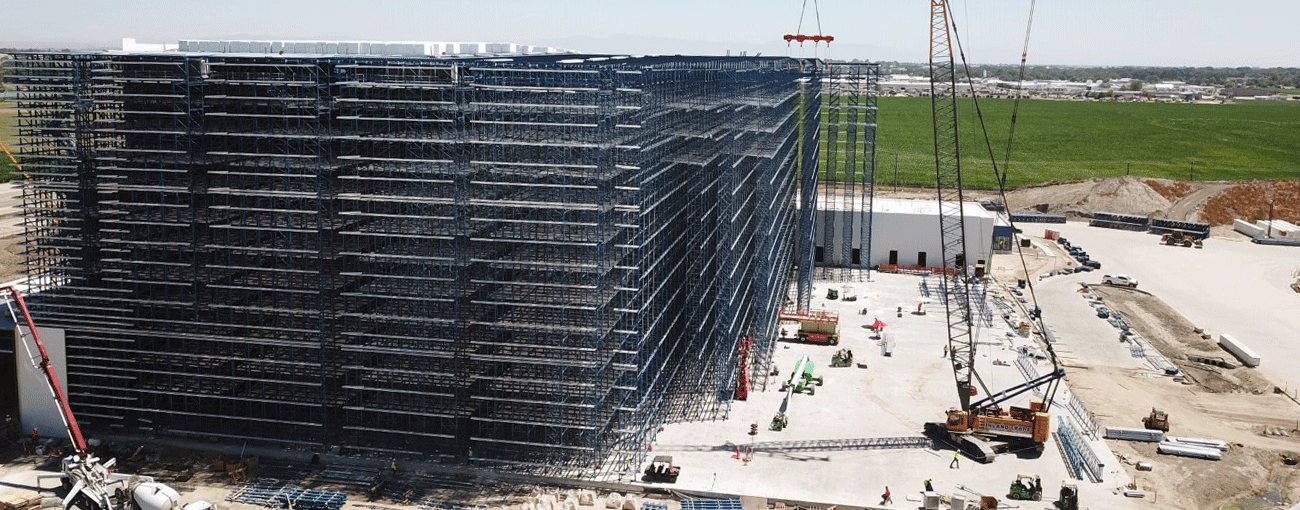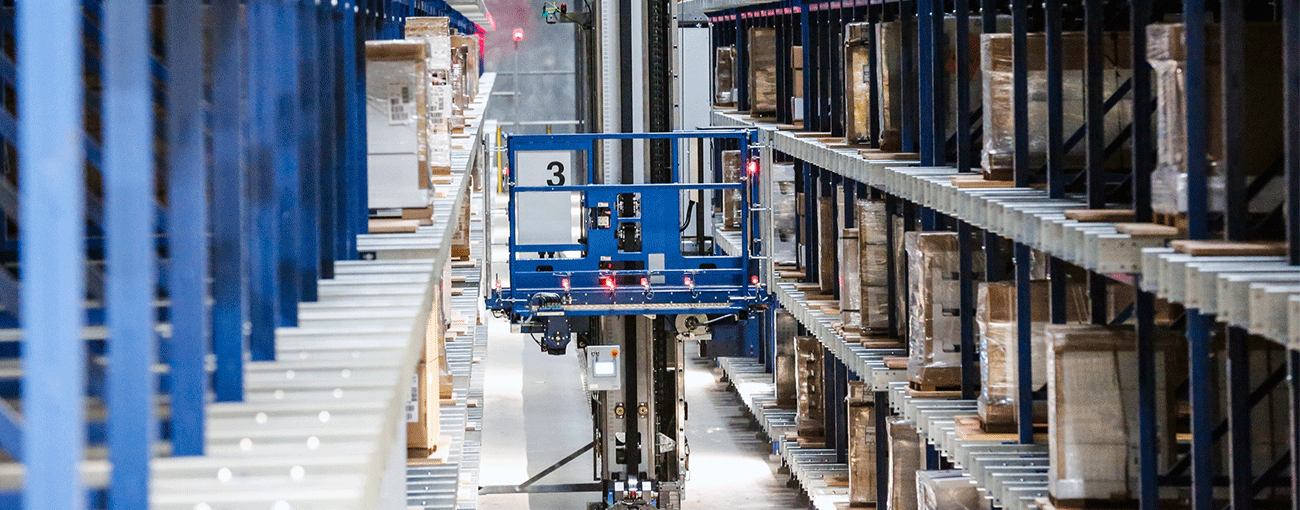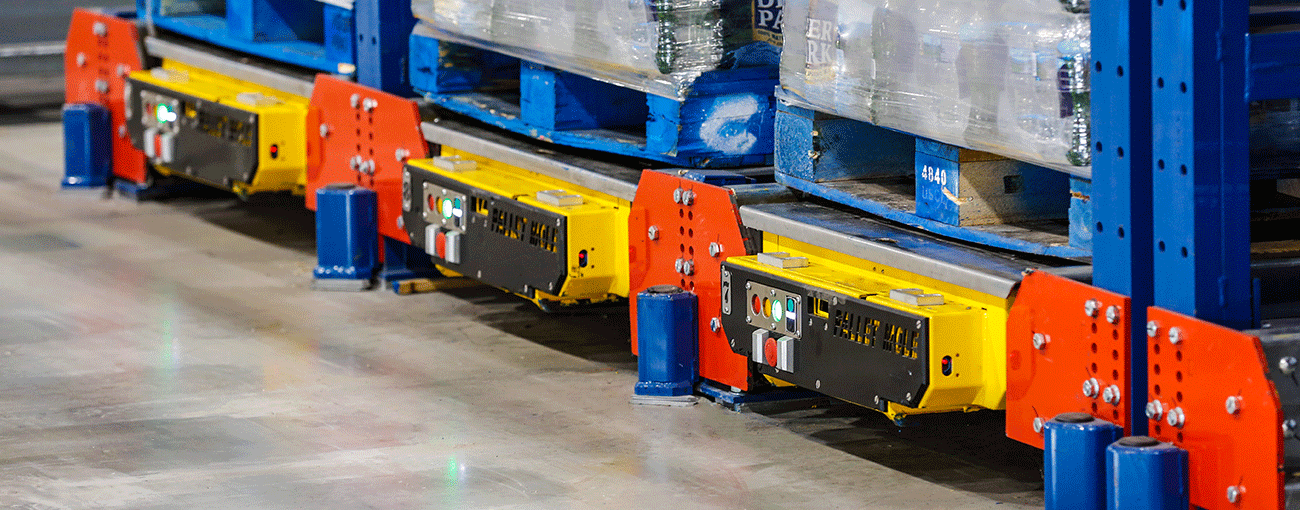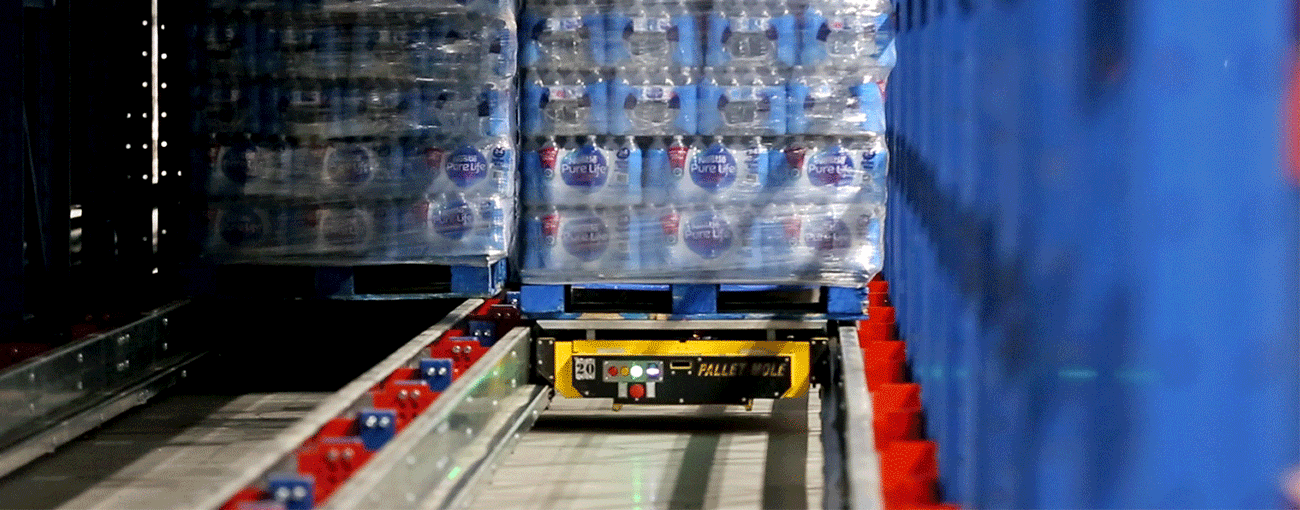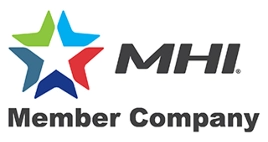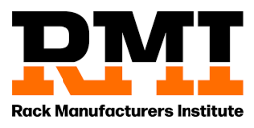Utilizing Automated Racking Solutions to Overcome Labor Challenges
Adoption of warehouse automation is a trend that is overtaking the supply chain industry unlike ever before. MHI advises in their 2022 Annual Industry Report that the adoption rate of robotics and automation will grow from 28% in the present to 79% in just the next five years alone.
Warehouse Automation Adoption – Why the Sudden Uptick?
Why? First, some background information. MHI’s Report continues, stating that over 87% of material handling industry leaders believe the pandemic has made the strategic importance of supply chain operations that much greater. 78% of them believe that the supply chain is evolving at a faster pace as a result and 64% of them are increasing their investments into it because of this.
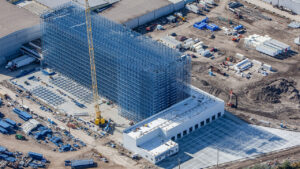
Frazier’s ASRS Engineering Team has designed Rack Supported Structures for automated applications since the 1970’s.
According to Martin Lashgari, Frazier’s Vice President of Engineering, Automated Storage and Retrieval (ASRS) Division, there’s a major reason for the sudden uptick in the investment in automation amongst the growing importance of the supply chain: Labor Challenges. Lashgari says, “ASRS systems have a range of benefits when it comes to operations that are predictable in nature. The main benefit of the automation is performing repetitive tasks that are otherwise performed by manual labor. With today’s labor challenges, automation can help reduce the workforce in an operation or alternatively allow for use of that workforce in more productive warehouse operations”.
How Can Automation Overcome Labor Challenges?
Per MHI, the top three labor related challenges being faced throughout the industry today are:
- Supply chain disruptions & shortages
- Hiring & retaining qualified workers
- Customer demands for faster response times
Let’s take a closer look at each of these challenges and how they can be overcome with automation:
Challenge 1: Supply Chain Disruptions & Shortages
Many supply chains disruptions and shortages currently occurring stem from lack of workforce availability. There are more open positions available than there are applicants. MHI’s Report projects manufacturers within the supply chain will have 4 million jobs available between 2020-2030, but will likely only be able to fill 1.9 million of them based on the lack of workforce availability.
Lashgari opines that a major reason for this is a shift in demographics within the labor market. “Baby boomers comprise about 25% of the total US labor market,” Lashgari says. “This is the generation who has been doing heavy, manual tasks in various industries including warehousing. With a year-by-year steady decline in this generation’s share in the labor market, Y and Z generations are under increasing pressure to fill in these positions in the coming years. The problem is that manual tasks are not so appealing to these young generations who are used to spending time on computers and cell phones. An automated racking solution’s ability to perform these tasks instead allows for reallocation of supply chain jobs into more desirable roles”.
Challenge 2: Hiring & Retaining Qualified Workers
As if the process of seeking qualified workers from a limited pool of candidates was not hard enough, hiring and retaining them has also become that much more difficult. For one, the job market is extremely competitive amongst employers each seeking to fill similar roles. Outcompeting other companies in order to bring on new talent comes at greater costs – both in terms of monetary and time investments. Hiring new workers is also only half the battle for employers; they have to go to greater ends to ensure they do not loose their existing staff to the job market. Consequently, this saddles the employer with even further costs to keep their supply chain operations running.
Replacing manual labor with automation can create a Greater Return on Investment both in the shorter-term following its implementation and in the long-term. Not only that, but it can eliminate the painstaking clerical processes involved with hiring and retaining workers. According to Lashgari, “The difficulties hiring and retaining workers will continue to create greater momentum towards automation. More and more companies will switch to ASRS because they do not see any way around it”.
Challenge 3: Customer Demands for Faster Response Times
The other side of supply chain labor is performance. Customers want their orders quickly. The longer it takes to search for and pick products, the longer it takes for these orders to be fulfilled. “In a conventional warehouse, more than 50%-60% of a worker’s time is spent on walking, searching, finding the product, and bringing it to the picking station”, says Lashgari. “These are the tasks that can be easily automated. By employing a good-to-person principle, this repetitive and low-value work is replaced by an ASRS system. These workers are now free to be moved to high-value operations in the warehouse. This significantly increases the productivity or the fulfillment capacity”, advises Lashgari.
Regarding performance, we cannot forget the variable of human error either. An error could be a mis-picked product or a product damaged during handling. Lashgari continues to say, “Humans make errors all the time in the warehouse due to fatigue, a distraction, working long-hour shifts, and so on. Mis-picking or damaging products while manually handling them will not only disrupt the operation but will cause customer dissatisfaction down the line. By eliminating the human factor from these operations and replacing it with an automated system, safety and picking accuracy will increase, resulting in a further boost in the productivity”.
When Will You Consider Automated Racking Solutions?
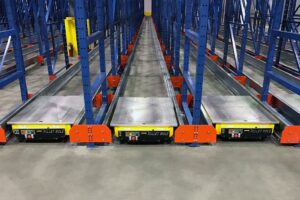
Frazier’s semi-automated, high density rack solutions, the Mole IQ.
If you are experiencing any of the aforementioned labor challenges, it is worth considering an automated racking solution for your operation. Even if you are not having trouble with labor, there are plenty of other signs you can look for in your warehouse that may suggest you would benefit from implementing automation. Read up on our When Will You Consider Warehouse Automation? blog post to learn more about when automation could be right for you and what types of automated racking solutions – from ASRS to the Mole IQ – are available.
How Frazier Can Help You
Frazier is the industry’s most accomplished manufacturer of racking for automated solutions. We pioneered the concept of rack supported construction for automated applications in the 1970’s. Lashgari heads Frazier’s dedicated ASRS Engineering Team that is extremely accredited within the racking industry. The diverse team that is highly skilled in rack design boasts 4 PE’s, 10+ designers, as well as a high degree of academia and wealth of experience working alongside leading automation integrators.
On top of that, they have full Research and Development capabilities to test for adaptations for ever changing market conditions. “We constantly test new components and designs. As the leader rack suppler in North American we value innovation. We have developed several new systems and components in recent years that have tremendously helped us and our customers in their projects. We design storage racks using unique approaches that are different than our competition. Frazier’s design philosophy provides customers with a cost-efficient, reliable design as the primary advantage of using our system.”
Contact us today at frazier@frazier.com to learned more about how our racking solutions paired with automation can take your supply chain operations to the next level!

